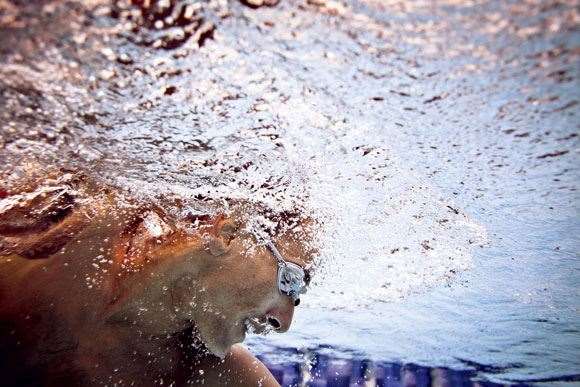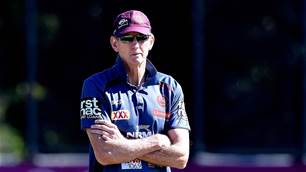Convention regularly gets thrown out the window in Camp Macca strategic meetings; he does what works,
 Chris McCormack Triathlon Swim
Chris McCormack Triathlon SwimImages: Shelby Hayden Craig
ON THE RUN
“I ran more as an Ironman athlete than I will be for Olympic qualifying; I was running about 120km a week, now I’ll run about 80-90km, but the intensity will be a lot higher. I have to be very delicate with my transition across because Ironman running was all about being able to run 3.45mins per kay for 42km off the bike, which isn’t that quick. Now I’ll have to run sub-3mins per kay. My muscles just aren’t used to doing that. If you ever have an injury in triathlon, it tends to always be running-orientated, especially as you age; if I pull up lame or get injured, it’s game over.
“All my interval training is on soft trails near my house near Cronulla or at a nearby national park; I’ll sit for five minutes at a certain tempo. My longest running session would be two hours and my shortest run an hour. A 90min session is made up of a 20min warm-up, a 15min warmdown and some intervals in the middle and variations of those. Some longer intervals at a slower tempo and some shorter intervals, but never around a track. I will get to a track, but at the moment I’m just getting the muscles flying fast again. If I go to the track I find that the tendency to pull a muscle is very high when I haven’t been running flat-out for so long.”
YOGA FOR BLOKES
“I’ve adopted yoga; I do something three days a week called Sportyoga when I’m home in Australia. I call it yoga for blokes; I go into a regular yoga class and really struggle holding the praying mantis position, for example. Sportyoga is about running through a series of poses, but much quicker. It’s more like a dance. I’ve found it’s a good way of getting reconnected and being completely body-aware. It’s about being able to turn
muscles on and off. You lose that ability if you don’t focus on it. You go through a yoga routine three times in a Sportyoga session. It’s very demanding; you sweat a lot, as opposed to yoga where you have to hold a pose for ten minutes while you start to shake off-balance.”
LEFT-RIGHT-UPPER
“Meridian boxing is concerned with the right side of your brain controlling the left side of your body and vise-versa. Blokes like Andre Agassi and Lance helped bring it to prominence. Everything I do with the right
side of my body I make sure I can replicate on my left. I’ve noticed, especially in boxing, that if I’ve been given a right-right-left-upper cut-hook sequence, I get a rhythm going. If I reverse it, it’s the same movement, but
as humans we wonder why it’s so difficult to do ...
“I’ve found that when I’ve been my most fittest, my Meridians are phenomenal; whereas when I’m only 80 per cent fit, I really have to concentrate during those Meridian boxing sessions. “I’ve often asked sceptic sports scientists to explain the relationship behind my sharp left-right coordination and high fitness and they’ve always offered the placebo concept as an answer. I remain convinced, though, that my Meridian work is an asset to my overall balance and performance.”
OLYMPIC LAYOUT
“I’ve heard people describe the triathlon course for the 2012 London Olympics as ‘easy’, being in Hyde Park and across flat ground, but I think of London as rarely sunny. If you bring the rain, it’s not an easy course; tight turns can get slippery. That three-feet-deep pond will be an aggressive swim as well. But I’m relatively big compared to these smaller, younger guys, so maybe I’ll be able to throw my weight around a bit ... ”
‒ James Smith
Related Articles

Chuffin' hell, here come more Poms!

Souths in shock Bennett swoop













